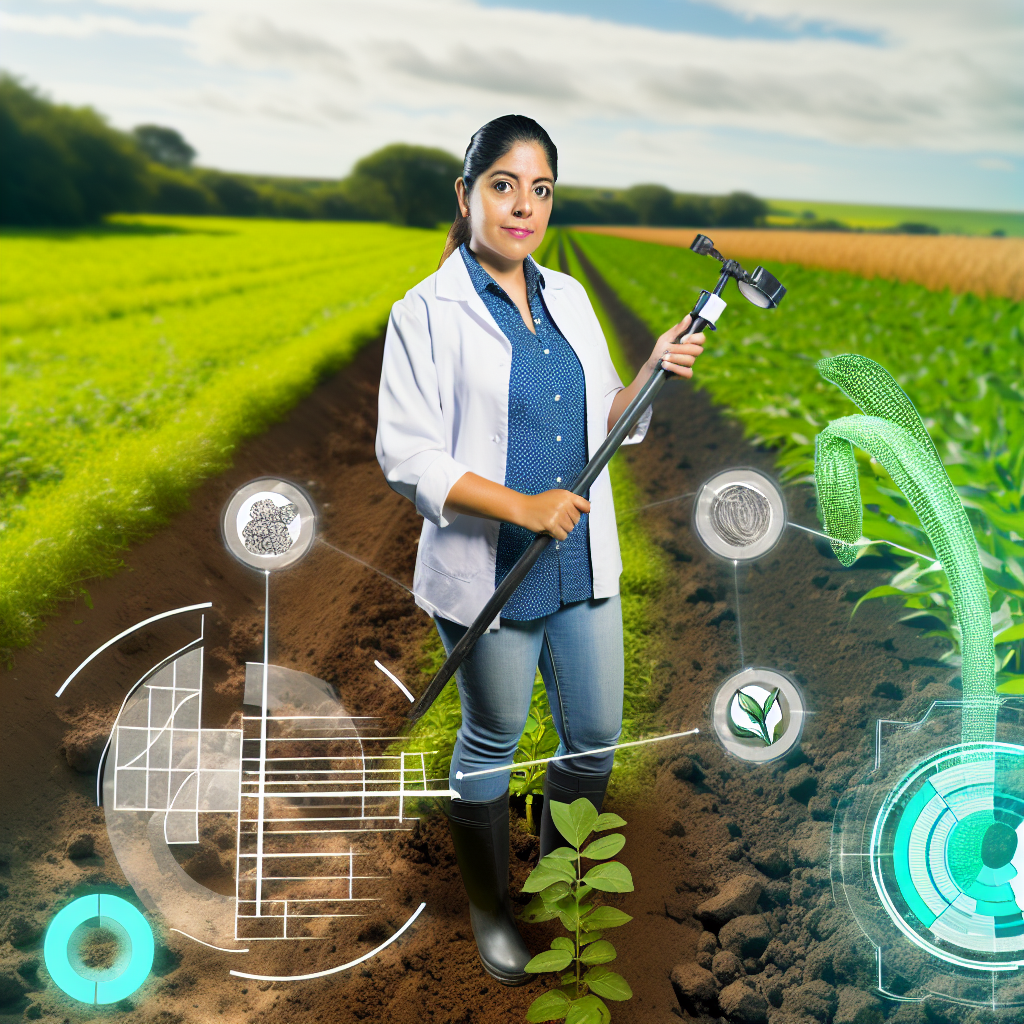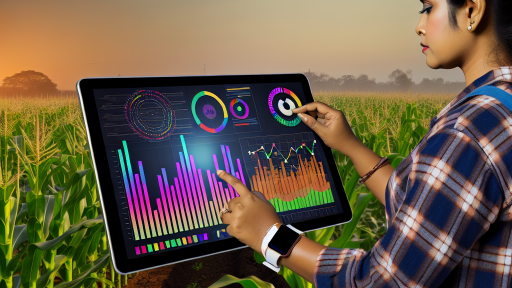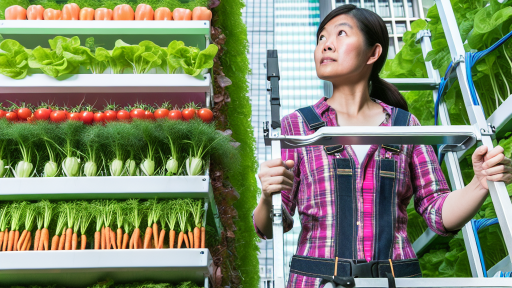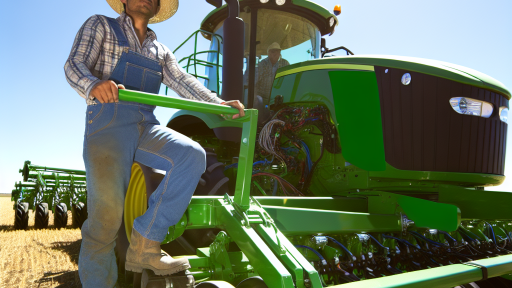Introduction to Precision Agriculture and Its Relevance to Soil Health
Precision agriculture revolutionizes farming practices across the globe.
This innovative approach combines technology with agriculture to enhance productivity.
Farmers can now utilize data-driven techniques to assess their fields accurately.
As a result, resource management becomes more efficient and sustainable.
Understanding Soil Health
Soil health plays a pivotal role in agricultural productivity.
Healthy soil supports robust plant growth and helps retain moisture.
Moreover, it fosters beneficial organisms and nutrient cycling.
Precision agriculture directly impacts soil health by promoting tailored management practices.
The Role of Data in Precision Agriculture
Data collection forms the backbone of precision agriculture.
Sensors and satellite imagery provide crucial insights into soil conditions.
Farmers can analyze nutrient levels, moisture content, and organic matter.
This information guides them in making informed decisions for their crops.
Benefits of Precision Agriculture for Soil Health
Implementing precision agriculture enhances soil management significantly.
Farmers apply fertilizers and pesticides more accurately, reducing runoff.
This leads to less chemical accumulation in the soil and water systems.
Transform Your Agribusiness
Unlock your farm's potential with expert advice tailored to your needs. Get actionable steps that drive real results.
Get StartedAdditionally, the use of cover crops improves soil structure and erosion control.
Future Trends in Precision Agriculture
The future of precision agriculture looks promising and innovative.
Advancements in AI and machine learning will refine data analysis methods.
This will lead to even more personalized approaches to farming.
Ultimately, these trends will contribute to sustainable practices and healthier soils.
Technological Advances in Precision Agriculture
Overview of Precision Agriculture Technologies
Precision agriculture incorporates innovative technologies into farming practices.
Farmers utilize data-driven insights to enhance productivity and sustainability.
This approach significantly improves decision-making for crop management.
Remote Sensing Technologies
Remote sensing involves gathering data from satellites and drones.
This technology helps farmers monitor crop health effectively.
Additionally, it allows for assessing soil conditions and moisture levels.
Farmers can receive real-time information, enhancing management strategies.
GIS and Data Analytics
Geographic Information Systems (GIS) play a crucial role in precision agriculture.
They help map and analyze spatial data for better decision-making.
Farmers can visualize yield variations across fields easily.
Data analytics further enhances these insights by revealing trends.
Variable Rate Technology
Variable Rate Technology (VRT) tailors the application of inputs like seeds and fertilizers.
This customization optimizes resource use and minimizes waste.
VRT significantly improves crop yields while reducing environmental impact.
Soil Health Monitoring
Soil health monitoring tools provide essential data about soil conditions.
These tools measure nutrient levels, pH, and moisture content.
Farmers can use this information to make informed amendments and treatments.
Improving soil health directly contributes to enhanced agricultural productivity.
Automation and Robotics in Agriculture
Automation and robotics are transforming traditional farming methods.
Showcase Your Farming Business
Publish your professional farming services profile on our blog for a one-time fee of $200 and reach a dedicated audience of farmers and agribusiness owners.
Publish Your ProfileAutonomous tractors and drones enhance operational efficiency.
These technologies facilitate precision planting and harvesting.
They also reduce labor costs and increase workload management.
Benefits of Technological Integration
Integrating technology into farming increases efficiency and productivity.
Farmers can produce more while conserving resources.
Moreover, this integration fosters better environmental stewardship.
As a result, precision agriculture leads to sustainable agricultural practices.
Benefits of Precision Agriculture for Soil Health Improvement
Enhanced Nutrient Management
Precision agriculture optimizes nutrient application across the field.
This approach ensures plants receive only what they need.
Farmers can prevent over-fertilization and reduce runoff.
As a result, soil health greatly improves over time.
Improved Soil Structure
Advanced techniques can enhance soil structure effectively.
Farmers can monitor soil compaction and moisture levels.
With this data, they can apply corrective measures easily.
Healthy soil structure supports better root penetration.
Water Conservation
Precision irrigation systems enable efficient water use.
These systems adjust water delivery based on real-time data.
Consequently, water stress on plants decreases significantly.
This leads to healthier crops and improved soil moisture retention.
Targeted Pest Management
Precision agriculture includes advanced pest detection methods.
Farmers can identify problem areas without widespread pesticide use.
This targeted approach minimizes chemical input and protects beneficial organisms.
Ultimately, it fosters a healthier ecosystem within the soil.
Data-Driven Decisions
Farmers harness data analytics to inform management practices.
They analyze soil composition and health through technology.
With accurate information, farmers make informed soil management decisions.
This leads to enhanced productivity and sustainability.
Gain More Insights: Remote Sensing Technologies for Organic Farmers
Data Collection and Analysis in Precision Agriculture for Optimal Soil Management
Importance of Data in Agriculture
Data serves as the backbone of precision agriculture.
It informs farmers about soil conditions and crop health.
Additionally, data-driven decisions enhance yield and resource management.
Methods of Data Collection
Farmers can collect data using various methods.
Remote sensing technology provides insights from above.
Soil sampling offers a close look at nutrient levels.
Moreover, drones can monitor crop health efficiently.
Remote Sensing Technology
Remote sensing captures data via satellites or aircraft.
This technology identifies areas needing attention.
Farmers use this information to direct their efforts.
Soil Sampling
Soil sampling involves taking samples at different locations.
This method reveals nutrient content and pH levels.
Showcase Your Farming Business
Publish your professional farming services profile on our blog for a one-time fee of $200 and reach a dedicated audience of farmers and agribusiness owners.
Publish Your ProfileConsequently, farmers can tailor their fertilization strategies.
Data Analysis Techniques
Analyzing collected data is crucial for effective management.
Statistical methods help identify trends in crop performance.
Furthermore, machine learning can predict future outcomes.
Using Statistical Methods
Statistical analysis enables farmers to understand data patterns.
It assists in comparing different soil types and crops.
Thus, growers can optimize planting decisions.
Implementing Machine Learning
Machine learning algorithms process large datasets quickly.
This technology can forecast yields based on historical data.
Ultimately, it contributes to better planning and resource allocation.
Benefits of Precision Agriculture
The benefits of precision agriculture are numerous.
It promotes sustainable practices while enhancing productivity.
Farmers experience reduced costs and improved soil health.
Enhancing Soil Health
By utilizing data, farmers can improve soil structure.
Additionally, proper nutrient management fosters microbial diversity.
This results in a more resilient agricultural ecosystem.
Increasing Productivity
Productivity increases through targeted interventions.
Farmers can ensure that crops receive adequate resources.
This, in turn, leads to higher yields and quality produce.
Discover More: Integrating Remote Sensing into Farm Management
Case Studies: Successful Implementation of Precision Agriculture Practices
Innovative Practices at Green Fields Farm
Green Fields Farm illustrates the power of precision agriculture.
Their investment in drone technology transformed crop monitoring.
Drones provided real-time data on plant health and moisture levels.
This information enabled targeted irrigation practices.
As a result, the farm reduced water usage by 30%.
Consequently, they improved overall crop yields significantly.
Maximizing Efficiency at Sunny Acres
These sensors monitored nutrient levels continuously.
Farmers received alerts about nutrient deficiencies instantly.
This technology allowed for precise fertilizer application.
Thus, they minimized waste and increased profitability.
Successful Harvests at River Valley Orchards
River Valley Orchards utilized satellite imagery for their crops.
This imagery offered insights into plant health across vast fields.
Farmers adjusted their strategies based on the data received.
For example, they identified areas in need of pest control.
The result was a 25% increase in their apple harvest.
Best Practices Developed by Bright Future Farms
Bright Future Farms implemented a precision irrigation system.
This approach optimized water usage across various crops.
They also integrated weather data into their planning.
Weather forecasts allowed them to anticipate irrigation needs.
Showcase Your Farming Business
Publish your professional farming services profile on our blog for a one-time fee of $200 and reach a dedicated audience of farmers and agribusiness owners.
Publish Your ProfileAs a result, their crop resilience improved dramatically.
Improvements Witnessed by Harmony Organic Farm
Harmony Organic Farm embraced variable rate technology.
This technology adjusted seeding rates based on soil variability.
Such adjustments ensured optimal planting conditions for each area.
Consequently, they witnessed healthier crops with higher yields.
Moreover, they reduced seed costs effectively.
Find Out More: Improving Livestock Management Through Data

Challenges and Limitations of Precision Agriculture in Soil Health Improvement
High Initial Costs
Implementing precision agriculture often requires a significant financial investment.
Farmers may face barriers due to high costs of technology and equipment.
Moreover, the initial setup can deter smaller farms from adopting these methods.
As a result, they may miss out on the benefits of improved soil health.
Technical Expertise Requirement
Precision agriculture demands specialized knowledge and skills.
Farmers must understand how to interpret data effectively.
Additionally, managing sophisticated technologies can be overwhelming.
Many farmers lack the technical training to utilize these systems fully.
Data Management Issues
Gathering and analyzing data is crucial for precision agriculture.
However, managing large datasets can become cumbersome.
Farmers may struggle to integrate different data sources effectively.
Consequently, inaccurate data can lead to suboptimal decision-making.
Environmental Variability
Soil conditions can vary greatly across small distances.
Precision agriculture must account for these variations to be effective.
Yet, unforeseen climatic changes can complicate this process.
Thus, even advanced technology may not compensate for environmental factors.
Resistance to Change
Adopting new practices can meet resistance from traditional farmers.
Established farming methods are often deeply rooted in local culture.
This resistance can hinder the dissemination of precision agriculture techniques.
As a result, outdated practices may persist, limiting soil health improvements.
Dependence on Technology
Precision agriculture is heavily reliant on technology.
System failures can disrupt farming operations and impact yields.
Moreover, farmers who depend solely on technology may overlook traditional practices.
This reliance can lead to a reduction in farming knowledge and resilience.
Delve into the Subject: How Automated Machinery Enhances Crop Production
Future Trends in Precision Agriculture Technology and Soil Health Solutions
Emergence of Advanced Technologies
Precision agriculture is rapidly evolving with advanced technologies.
Farmers now utilize drones for real-time monitoring.
These drones provide detailed aerial imagery of crops.
Moreover, satellite imagery enhances field mapping accuracy.
This technology allows for precise fertilizer application.
Additionally, sensors in the fields collect valuable data.
These sensors track soil moisture and nutrient levels.
Integration of Data Analytics
Data analytics is crucial for decision-making in agriculture.
Showcase Your Farming Business
Publish your professional farming services profile on our blog for a one-time fee of $200 and reach a dedicated audience of farmers and agribusiness owners.
Publish Your ProfileBy analyzing historical data, farmers can predict crop yields.
This information helps in adjusting planting strategies.
Machine learning models identify patterns in agricultural data.
These patterns lead to optimized resource allocation.
Focus on Soil Health
Soil health remains a top priority in precision agriculture.
Farmers increasingly use cover crops to enhance soil fertility.
Furthermore, they implement crop rotation strategies to prevent depletion.
This practice restores essential nutrients to the soil.
Additionally, microbial health in soil is gaining attention.
Adoption of Sustainable Practices
Sustainability is becoming a key driver in agricultural practices.
Farmers adopt integrated pest management to minimize chemical use.
They also explore organic farming methods to improve biodiversity.
These practices stimulate healthier ecosystems and soils.
As a result, they contribute to long-term productivity.
Collaboration with Research Institutions
Collaboration with research institutions enhances innovation.
Farmers gain access to the latest research on soil health strategies.
These partnerships foster knowledge sharing and technology transfer.
Consequently, farmers implement scientifically-backed techniques.
Preparation for Future Challenges
Farmers are preparing for future climate challenges.
Adopting resilient crops is one way to combat changing conditions.
Additionally, water conservation practices are gaining popularity.
These practices ensure sustainable water use in agriculture.
Consequently, farmers remain adaptable and productive.
Integrating Traditional Farming Methods with Precision Agriculture for Sustainable Practices
Understanding Traditional Farming Methods
Traditional farming methods have sustained communities for generations.
They often emphasize local knowledge and cultural practices.
Farmers use techniques suited to their specific environments.
These methods are often low-tech and cost-effective.
For instance, crop rotation helps maintain soil fertility.
Moreover, intercropping boosts biodiversity on farms.
The Rise of Precision Agriculture
Precision agriculture leverages technology for improved efficiency.
It uses GPS, sensors, and data analytics to optimize farming practices.
This approach enhances productivity and minimizes waste.
Farmers can monitor soil health and moisture levels in real-time.
Consequently, they make more informed decisions about resource use.
Combining Traditional and Precision Practices
Integrating these two approaches can yield great benefits.
Farmers can adopt precision techniques to enhance traditional methods.
For example, soil tests can inform organic fertilization strategies.
This combination supports sustainable farming practices.
It helps preserve biodiversity while increasing yield.
Case Studies of Successful Integration
Many farmers have successfully merged traditional and precision farming.
Showcase Your Farming Business
Publish your professional farming services profile on our blog for a one-time fee of $200 and reach a dedicated audience of farmers and agribusiness owners.
Publish Your ProfileIn California, the Green Valley Farm uses drones for crop surveillance.
They pair this with manual irrigation practices from their heritage.
This dual approach has improved their harvest significantly.
Similarly, farmers in Brazil utilize traditional seed varieties combined with precision planting techniques.
Challenges and Considerations
Integrating these methods is not without challenges.
Farmers may face a learning curve with new technologies.
Moreover, initial costs for precision tools can be high.
However, education and community support can help mitigate these issues.
Future Directions for Sustainable Practices
Looking ahead, the collaboration between these methods will grow.
Innovations in technology will enhance traditional practices.
This synergy promises to increase farming resilience against climate change.
Additionally, research will continue to unveil the benefits of various techniques.
Ultimately, sustainable agriculture practices will flourish with this integration.
Additional Resources
Innovations in Seed and Farming Technologies Drive Productivity …




